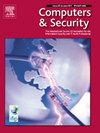A review on the static and dynamic risk assessment methods for OT cybersecurity in industry 4.0
IF 4.8
2区 计算机科学
Q1 COMPUTER SCIENCE, INFORMATION SYSTEMS
引用次数: 0
Abstract
The inherent vulnerabilities of Operational Technology (OT) systems to cyberattacks have historically been mitigated through the practice of air-gapping, effectively isolating them from broader industrial networks and thereby maintaining a level of security. However, the beginning of the fourth industrial revolution (Industry 4.0) signs a concept shift towards increased interconnectivity, enhanced visibility, and digital continuity. The transition towards Industry 4.0 has been characterized by a marked increase in security breaches within industrial settings, leading to a variety of hazardous outcomes. These incidents underscore the importance of cybersecurity within OT environments, necessitating the development and implementation of strict cybersecurity measures to safeguard against potential threats. In response to this emerging threat landscape, there has been a notable shift from static risk assessment methodologies towards more dynamic approaches, particularly with the incorporation of Artificial Intelligence (AI) technologies. This paper presents a comprehensive literature review that explores various risk assessment approaches within the context of Industry 4.0, focusing on industrial systems. It outlines the transition from traditional, static risk assessment methods to innovative, dynamic risk assessment strategies facilitated by the integration of AI.
求助全文
约1分钟内获得全文
求助全文
来源期刊

Computers & Security
工程技术-计算机:信息系统
CiteScore
12.40
自引率
7.10%
发文量
365
审稿时长
10.7 months
期刊介绍:
Computers & Security is the most respected technical journal in the IT security field. With its high-profile editorial board and informative regular features and columns, the journal is essential reading for IT security professionals around the world.
Computers & Security provides you with a unique blend of leading edge research and sound practical management advice. It is aimed at the professional involved with computer security, audit, control and data integrity in all sectors - industry, commerce and academia. Recognized worldwide as THE primary source of reference for applied research and technical expertise it is your first step to fully secure systems.
 求助内容:
求助内容: 应助结果提醒方式:
应助结果提醒方式:


